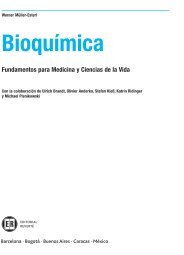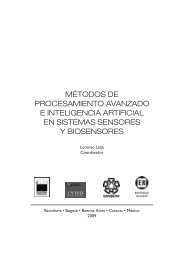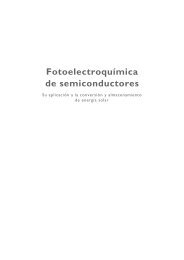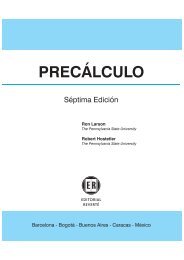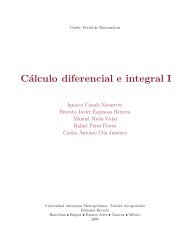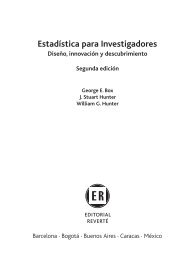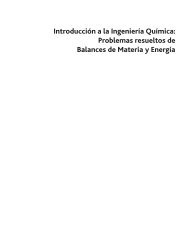Chapter 11 Gravity
Chapter 11 Gravity
Chapter 11 Gravity
Create successful ePaper yourself
Turn your PDF publications into a flip-book with our unique Google optimized e-Paper software.
<strong>Gravity</strong><br />
Picture the Problem We can use the definition of the gravitational field due to a<br />
point mass to find the x and y components of the field at the origin and then add<br />
these components to find the resultant field. We can find the magnitude of the<br />
field from its components using the Pythagorean theorem.<br />
(a) The gravitational field at the<br />
origin is the sum of its x and y<br />
components:<br />
Express the gravitational field due to<br />
the point mass at x = L:<br />
Express the gravitational field due to<br />
the point mass at y = L:<br />
Substitute in equation (1) to obtain:<br />
r r r<br />
g = g + g<br />
(1)<br />
r<br />
g<br />
r<br />
g<br />
x =<br />
y =<br />
x<br />
y<br />
Gm<br />
iˆ<br />
2<br />
L<br />
Gm<br />
2<br />
L<br />
(b) The magnitude of g r is given by: 2 2<br />
= g x + g y<br />
Substitute for gx and gy and simplify<br />
ˆj<br />
r r r Gm<br />
g g g iˆ<br />
Gm<br />
=<br />
ˆ<br />
x + y = + j ⇒ the<br />
2 2<br />
L L<br />
direction of the gravitational field is<br />
along a line at 45° above the +x axis.<br />
⎛ Gm ⎞ ⎛ Gm ⎞ Gm<br />
to obtain: g = ⎜<br />
= 2 2 ⎟ + ⎜ 2 ⎟<br />
2<br />
⎝ L ⎠ ⎝ L ⎠ L<br />
r<br />
67 ••• A nonuniform thin rod of length L lies on the x axis. One end of the<br />
rod is at the origin, and the other end is at x = L. The rod’s mass per unit length λ<br />
varies as λ = Cx, where C is a constant. (Thus, an element of the rod has mass<br />
dm = λ dx.) (a) What is the total mass of the rod? (b) Find the gravitational field<br />
due to the rod on the x axis at x = x0, where x0 > L.<br />
Picture the Problem We can find the mass of the rod by integrating dm over its<br />
length. The gravitational field at x0 > L can be found by integrating g at x<br />
r<br />
d 0 over<br />
the length of the rod.<br />
(a) The total mass of the stick is<br />
given by:<br />
Substitute for λ and evaluate the<br />
integral to obtain:<br />
g r<br />
M =<br />
L<br />
∫<br />
0<br />
λ dx<br />
L<br />
0<br />
2<br />
M = C∫<br />
xdx =<br />
1<br />
2<br />
CL<br />
2<br />
2<br />
233



